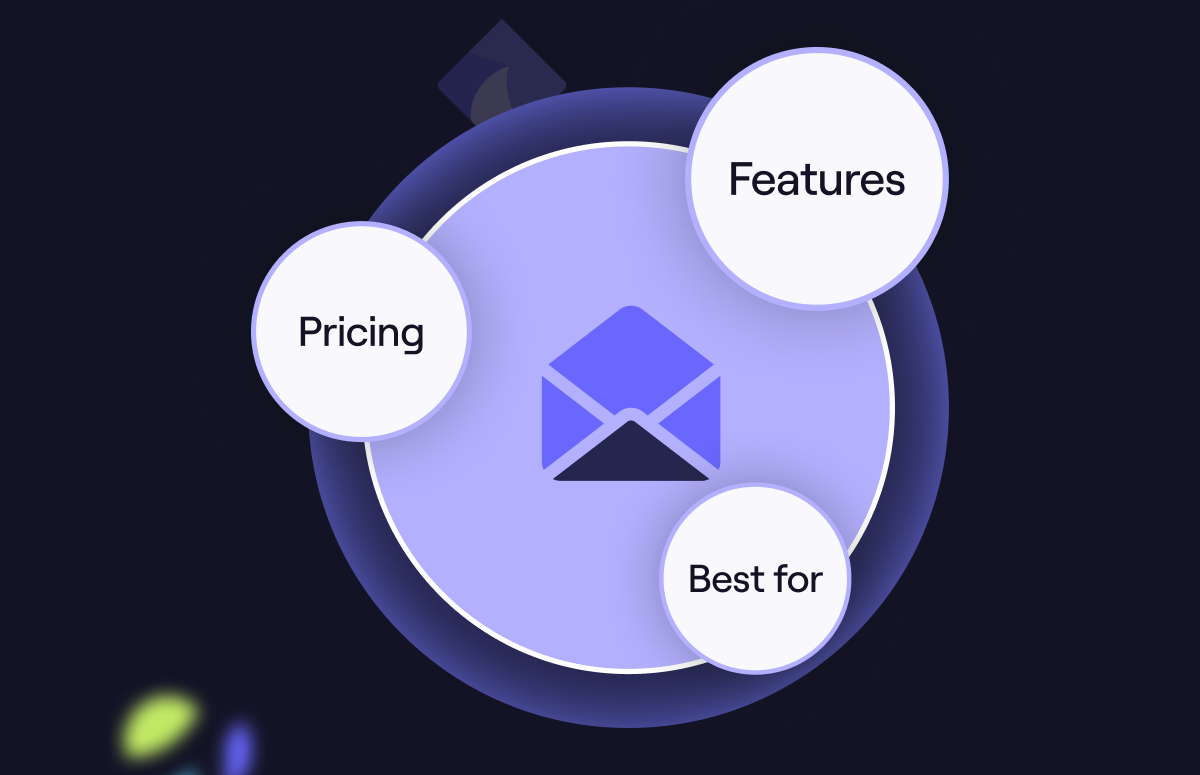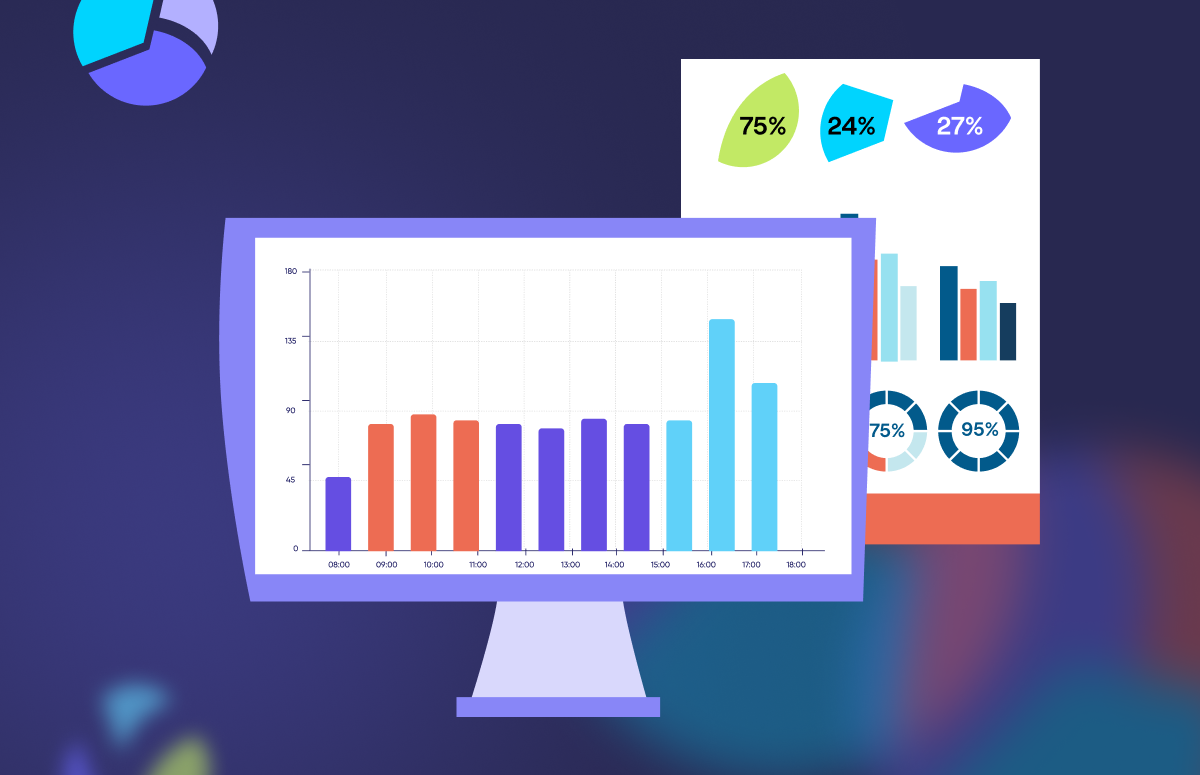12 Best AI Sales Agents for 2025
1. Cognism
Best for: Faster prospecting and lead generation
Cognism is the perfect partner for faster sales prospecting.
At its core, Cognism is a B2B sales intelligence tool. It offers high-quality, compliant data at the company and contact level, including emails, mobile numbers, technographics, and buying intent data.
It also offers a powerful AI Search feature which allows sellers to quickly build targeted lead lists that fit their ICP without messing around with filters and sorting parameters.
Simply type (or speak!) your request, and you’ll instantly get the results you need, ChatGPT-style!
See how it works - watch this video!
Here’s why 3,000+ companies use Cognism for smart sales prospecting:
Cognism offers three easy ways to search for your ideal prospects:
- Text-to-command search. Just type what you’re looking for in plain English (or any other language, for that matter) into the AI Search bar, and Cognism will surface the correct accounts. For example, you can say, “Sales VPs in European companies with revenue of $2m+”, and Cognism will find all the contacts that tick those boxes.
- Direct prospect or account search. If you’re looking for someone in particular, you can just enter their name or some other data point that identifies them, such as “The CMO at Salesforce.”
- Voice search. Done enough typing for today? Then just say what you’re looking for! Cognism’s AI Search supports multiple languages.
Cognism pricing:
Choose a package to suit your needs:
- Grow, which offers essential contact and company data for prospecting.
- Elevate, which combines Cognism’s high-quality data with advanced intelligence and actionable signals.
Both packages include:
- Contact and company data, including phone-verified Diamond Data® contacts.
- Target market analytics.
- Integrations with leading CRMs and engagement tools.
- No hidden platform fees: You only pay for licenses and add-ons.
- Onboarding and training: We ensure a smooth and successful start.
- Exceptional customer support: Get fast answers via live chat (20-second average response time) from our highly-rated support team (99% satisfaction score).
Here’s why customers love Cognism’s AI sales agent:

Digital Marketing Specialist @Protolabs
2. Clay
Best for: Inbound sales
Clay helps sales teams enrich, score, and even message inbound leads automatically.
It helps to improve speed to lead and minimises the required investment in inbound SDR teams.
Key features:
- Access to dozens of different data providers to maximise coverage.
- Integrations with any kind of inbound lead form.
- An AI research agent to browse the web and search for information.
- Generative AI that uses enrichment data to write personalised emails at scale.
Pricing:
Clay’s pricing packages start at $134 per user per month and scale up to around $1,800 per user per month at the top end. All of its packages have yearly credit limits, but you can increase them by upping your monthly investment. Clay also offers a free version with limited functionality.
⚠️ See how Cognism compares to Clay.
3. Scratchpad
Best for: CRM hygiene
Scratchpad is a helpful AI sales agent for maintaining CRM hygiene. It allows you to simplify Salesforce, keep your CRM updated, and automate data entry.
Scratchpad ensures that the basic housekeeping tasks that reps often neglect get completed, improving handoff between teams.
Key features:
- Automated notetaking and transcripts.
- Real-time call coaching.
- Suggestions for CRM updates.
- Pipeline management functionality.
Pricing:
Scratchpad offers a limited free plan, with paid options starting at $24 per user per month.
4. Common Room
Best for: Buying signals
Common Room is a customer intelligence platform.
It helps sales teams capture buying intent signals like job changes and repeat website visits, then run automated outreach to high-intent prospects.
Key features:
- Unified buying signals across first, second, and third-party channels.
- Website visitor identification.
- Account data enrichment.
- AI-powered personalised sales outreach.
Pricing:
Plans start at $625 a month, billed annually, and that only comes with two seats. You’ll have to pay more for additional users, with a limit of five users on the Starter plan. At that point, you’ll need to upgrade to the Team plan, which starts at $1,667 a month.
5. Gong
Best for: Smarter sales coaching
Gong is an AI-enhanced revenue intelligence platform. It collects conversation data (from phone calls, emails, social media messages, and more) and uses it to provide actionable advice.
Cognism uses Gong to fuel both sales and marketing. Our marketing team uses Gong to understand how our customers talk about us and our competitors, which we then use to inform marketing messaging.
On the sales side, we use it to extract insights such as word tracks to avoid or focus on and assess how new product messaging comes across in our sales conversations.
Key features:
- AI-powered forecasting.
- Cross-team or rep comparison.
- AI sales coaching.
- Deal inspection.
Pricing:
Gong designs custom pricing packages on a per-customer basis. Fill out a form on its website to get a quote.
6. Clari
Best for: Automated sales admin
Clari is another revenue intelligence platform with a unique AI assistant.
Clari’s AI sales agent records your calls, automatically creates transcripts, and imports notes to your CRM.
Key features:
- Real-time AI coaching.
- Data auto-capture.
- Pipeline management.
- Activity tracking.
Pricing:
To get pricing for Clari, you’ll need to request a custom quote.
7. Artisan
Best for: Outbound sales
Artisan is an AI sales agent designed to support outbound BDR tasks.
Use Artisan to identify potential prospects, craft email outreach, and send LinkedIn emails.
Key features:
- Email and LinkedIn messaging.
- Campaign management.
- Email warmup.
- Email personalisation.
Pricing:
Artisan currently offers five products; to obtain pricing, contact its sales team.
8. Crystal
Best for: Understanding prospect personalities
Crystal is an interesting agent to have in your sales tech stack. It’s a personality assessment and communication tool. It helps you understand what a prospect’s personality profile is likely to be (using the DISC model) and then gives you practical tips for interacting with that person.
For instance, if Crystal identifies that the prospect is highly risk-averse, it might recommend that you avoid risk-based language or provide documentation around your company’s data security protocols or ROI guarantees.
Key features:
- Predictive personality profiles based on compliant data.
- Chrome Extension for easy access.
- Communication style recommendations with Do’s and Dont’s.
- An AI writing assistant for personality-focused email outreach.
Pricing:
Crystal’s Premium plan costs $49 a month, billed annually. It offers a free plan with limited credits and features.
9. Lavender
Best for: Writing outreach emails
Lavender is an AI email coach. It helps SDRs and AEs write stronger sales emails and improve response rates.
It’s a constantly evolving AI sales tool. As of writing, it’s been trained on over one billion emails to understand how different language patterns work better for given goals than others.
Key features:
- Detailed analytics for email performance.
- Actionable recommendations.
- Overall email score.
- Integrations with Gmail, Outlook, HubSpot, Salesloft, and more.
Pricing:
Lavender offers a basic free forever plan, but it’s limited to only five monthly emails. For higher volumes, you’ll need to upgrade to a paid plan. These start at $27 a month when billed annually.
10. InsightSquared
Best for: Forecasting and analytics
InsightSquared is an AI-powered sales forecasting and analytics tool.
It pulls data from the rest of your sales tech stack, like your CRM or outreach automation platform, and helps you analyse and understand it better. It offers over 350 out-of-the-box reports and the ability to design custom reports with a no-code builder.
Key features:
- Predictive analytics and forecasting tools.
- More than 350 pre-built reports.
- Conversation intelligence.
- Suggestions for correcting data issues.
Pricing:
Fill out a form on InsightSquared’s website for custom pricing details.
11. Botsonic
Best for: Website chat
Botsonic is the last AI sales agent on this list.
It’s an AI chatbot powered by OpenAI’s ChatGPT. It handles customer queries and automates customer engagement.
Key features:
- Automated customer support.
- Employee support chatbots.
- Support for over 50 languages.
- WhatsApp integration.
Pricing:
Botsonic plans range from $19 to $299 a month, depending on the level of functionality you require.
12. Breeze Prospecting Agent
Best for: Targeted email outreach
Breeze Prospecting Agent uses AI to spot and prioritise CRM contacts that closely match your ideal customer profile.
The platform then uses these details to help develop personalised outreach emails at scale.
Key features:
- Leverages data from marketing channels (landing pages and forms) for personalisation.
- Automated sequences that include follow-ups and re-engagement emails.
- AI email writer with a broad selection of pre-defined writing styles.
- Access to numerous other sales-specific features.
Pricing:
Breeze Prospecting Agent is available starting from $90 per user per month through HubSpot’s Sales Hub Professional package. This plan includes extra features like sales forecasting, email scheduling and tracking, and more.
FAQs
What are AI sales agents?
AI sales agents are software tools that leverage artificial intelligence as their primary technology to help with sales-related tasks.
They use machine learning (ML), natural language processing (NLP), and large-scale data analysis to work alongside sales reps and automate tasks like:
- Lead generation and identification.
- Writing email and social outreach.
- Data analysis and insights.
- Handling customer support tickets.
How do AI sales agents work?
AI sales agents leverage advanced technologies, such as machine learning and natural language processing, to simulate human-like interactions.
They integrate with the rest of your sales tech stack, such as your CRM, data platform, and sales enablement solution, to access information like the content of sales conversations or pipeline deal stages.
Then, they process this info and use AI to provide actionable insights, craft personalised messages, or identify high-intent prospects, depending on the task you want the AI sales agent to complete.
What are the benefits of using AI sales agents?
The main benefits that revenue teams see from using an AI sales agent include:
- Automating repetitive tasks.
- Identifying potential leads and their contact details.
- Enabling 24/7 customer engagement and instant query responses.
- Scoring and prioritising leads.
- Improving lead handoff with full context to reps.
- Personalising communication with prospects and customers.
- Providing accurate sales forecasts.
- Recommending next-best sales actions.
- Minimising data entry mistakes.
Can AI sales agents replace human salespeople?
AI sales agents probably won’t completely replace human salespeople, at least not in all contexts.
Human connection is still an essential component of sales, especially for large deal sizes and complex B2B sales, such as when targeting enterprise companies.
In high-volume, low-stakes environments (like online retail purchases), AI sales agents are more likely to replace human salespeople. In B2C, many people regularly buy from e-commerce stores without ever interacting with a human.
How can businesses implement AI sales agents?
Implementing AI sales agents can significantly enhance a business’s sales efficiency, customer engagement, and lead management.
Here’s a step-by-step guide to getting started:
Define objectives and use cases
- Identify the tasks the AI sales agent will handle. They could be lead generation, qualification, nurturing, or customer support.
- Align these tasks with your business goals (e.g., increasing conversions, reducing response time, or improving customer experience).
Choose the right AI technology
- Research available tools, their features, pricing and integrations.
- Recheck the above list to decide on the best AI sales agents for your business!
Prepare data
- Train the AI using historical sales data, FAQs, product information, and customer queries.
- Adhere to the GDPR, CCPA, or any other relevant data privacy regulations.
Develop or deploy AI models
- Build a tailored AI model if your needs are complex.
- Alternatively, use out-of-the-box AI tools that you can customise for your use case.
Integrate with your existing systems
- Connect the AI agent with tools like your CRM, email marketing software, and website chat tools.
- Ensure it works across channels (e.g., website, social media, email, and phone).
Create a knowledge base
- Develop a centralised repository of product and service information to train the AI.
- Regularly update this knowledge base to keep the AI agent accurate and relevant.
Test and optimise
- Run pilot programs to identify any shortcomings.
- A/B test to determine the most effective interaction flows.
Train human teams
- Train your sales and customer service teams to collaborate with AI agents.
- Clarify which tasks the AI handles versus human employees.
Monitor performance
- Use analytics to track metrics like response times, customer satisfaction, and conversion rates.
- Continuously refine the AI model based on feedback and customer data.
Ensure human oversight
- Provide an easy way for customers to escalate complex queries to human agents.
- Regularly review interactions to ensure the AI remains aligned with your brand voice.
What is the best AI sales agent?
If you’re looking for an AI agent that can identify your next best customers quickly and accurately, then Cognism’s AI Search is the perfect solution.
Book a demo today and discover how Cognism can transform your sales motion.



